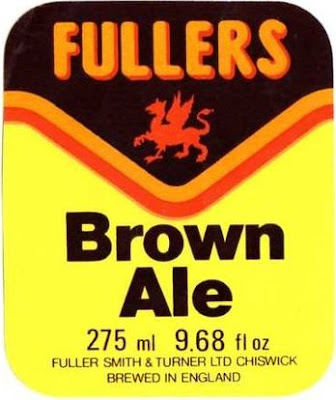I'm always finding new information in brewing records. Suddenly twigging what some seemingly random squiggle means. I had this happen to me this week. When doing some research on Dark Mild for my book after next, "Free!".
I realised that there were a couple of Fullers journals that I'd never processed. Not sure why. Other than that I've thousands of photographs of brewing records and I mostly only extract information from them when needed. For some reason I was attracted to this line:
It's on the bottom right - "Tint 45º"
In the last couple of decades of the 19th century, Mild Ales began to darken. Well, some of them did. The process was very patchy and didn’t occur everywhere simultaneously. It’s also very difficult to pin down exactly when and to what degree Mild became darker.
The biggest problem is the lack of hard data. It’s tricky calculating the colour from the ingredients, especially when sugar is involved. As this is mostly only described very vaguely. There are very few records of beer colour before WW I. Occasionally chemical analyses will include a number for the colour, mostly in some weird scale that died out 100 plus years ago. Only a handful of Barclay Perkins records from the Edwardian period include the beer’s colour.At least that’s what I thought. Until I happened to notice that line in a Fullers brewing record. That “Tint” number looked like it was in an understandable scale. The type of Lovibond used before WW II.
Having multiple examples spanning a few years, it’s possible to get an idea about what was happening with the colour of Fullers X Ale. It starts off in 1893 at 45. That’s what I’d call semi-dark, a little duskier than Newcastle Brown Ale. About 11 SRM. Well short of the colour of a modern Dark Mild. Plenty dark enough, however.to be easily distinguished form their Pale Ales.
In 1897, it became a little darker and the following year paler again. Whatever the fluctuations, it had double the colour value of its Pale Ale siblings.
My guess as to when the darkening of Mild Ale began was the 1880s or 1890s. I now know for certain that it had started in the early 1890s. At least in London. It's clear that Mild didn’t move suddenly from pale to dark in one step, but rather it was a gradual process, taking decades.
The unanswered question is why Mild Ale became darker. That’s still a mystery.












































































3 comments:
As the gravity of Mild fell, would the natural colour also lighten? Perhaps darkening would keep the impression of a 'hearty' drink without additional costs of extra malt or sugars?
That implies to me that Manns brown ale would have been considerably darker than any mild ale when it originally hit the market.
I think you may have answered your unanswerable question: To be easily distinguished from their pale ales.
Post a Comment